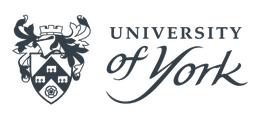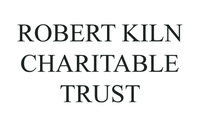Archaeological Evaluation of the Anglo-Saxon and Viking site at Torksey, Lincolnshire
Julian D Richards, Dawn Hadley, 2016. https://doi.org/10.5284/1018222. How to cite using this DOI
Data copyright © Prof Julian D Richards, Prof Dawn Hadley unless otherwise stated
This work is licensed under a Creative Commons Attribution 4.0 International License.
Resource identifiers
- ADS Collection: 1383
- DOI:https://doi.org/10.5284/1018222
- How to cite using this DOI
Overview

The archive comprises a number of unpublished reports which cover the different aspects of our evaluation, a spreadsheet of hand-collected human bone from the winter camp, and a searchable database of the known metal-detected finds from the winter camp reported up to August 2015, with images of most finds.
Reports
- Perry, Gareth; Stein, Samantha; Young, Jane (2012) Torksey Test-Pits 2011 University of Sheffield, Department of Archaeology: Sheffield. DOI:10.5284/1038392. Reports on Five Test Pits Excavated in Torksey, Lincolnshire, 4th-8th July 2011.
- Samantha Stein (2011) Geoarchaeological report from Torksey, Lincolnshire, October-November 2011 University of Sheffield: Sheffield. DOI:10.5284/1038394.
- Samantha Stein (2012) Geoarchaeological report from Torksey, Lincolnshire, July and November 2012 University of Sheffield: Sheffield. DOI:10.5284/1038395.
- Brown, H. (2012) Magnetometer survey of Land North of Torksey, Lincolnshire Department of Archaeology, University of York: University of York. DOI:10.5284/1038043.
- Brown, H. (2012) Geophysical Survey at Torksey, Lincolnshire: Magnetometer Survey of Land South of Torksey Castle Department of Archaeology, University of York: University of York. DOI:10.5284/1038041.
- Richards, J.D. (2012) Torksey Test Trench 2012: Report on a Trial Trench Excavated near Torksey, Lincolnshire, 13-16 Dec 2012 Department of Archaeology, University of York: University of York. DOI:10.5284/1038042.
- Diana Mahoney Swales and Gareth Perry (2014) Torksey Evaluation Trench 2013. Report on an Evaluation Trench Excavated near Torksey, Lincolnshire 29 July - 2 August 2013 University of Sheffield: Sheffield. DOI:10.5284/1038396.
- Elizabeth Craig-Atkins (2015) The human remains from the Winter Camp University of Sheffield: Sheffield. DOI:10.5284/1038397.
- Lily Carhart (2015) An Iron Hoard from Torksey, Lincolnshire: Identification and Analysis University of Sheffield: Sheffield. DOI:10.5284/1038398.
- C. Wilkinson (2015) Conservation Assessment Report York Archaeological Trust: York. DOI:10.5284/1038399.
- C. Wilkinson (2015) Report on the Conservation and Stabilisation of Small Finds from Torksey York Archaeological Trust: York. DOI:10.5284/1038400.
- Radiocarbon dating reports:
- C14 dates for two fragments of hand-collected bone from the winter camp, Beta Analytic: TORK12 Samples 60 & 62
- C14 dates for two fragments of hand collected bone from Castle Field, 14CHRONO Centre, Queens University Belfast: TORK12 Samples A23 & B23
- C14 dates for 2 skeletons cist graves from cemetery on Main Street, Torksey, Beta Analytic:
- TOMS03 skeleton 6: mature adult male. The grave contained gold thread suggesting burial in a high-status garment
- TOMS03 skeleton 7: mature adult male
Spreadsheet
- Spreadsheet of hand-collected bone from the winter camp. Elizabeth Craig Atkins, University of Sheffield.
Metal-Detected Finds
The site of the Viking winter camp at Torksey has been intensively metal-detected for at least the last 20 years. We estimate that over this period some 80 metal detector users have worked the site, although maybe only a dozen have done so in any sustained fashion. The combination of shifting windblown sand and intensive ploughing means that the site has continued to be productive over a long period. Some of the detecting has been illegal ‘night-hawk’ activity and we are aware that many of these finds have never been reported and have been sold to dealers on by private online sale. Other metal-detecting has been undertaken with landowner permission and finds have been reported to the Portable Antiquities Scheme, with several items declared as Treasure. Several detector users also reported their finds to Mark Blackburn, at the Fitzwilliam Museum. Cambridge, which also purchased many items.
One of the primary aims of the evaluation was to provide a concordance and catalogue of all known finds, which is presented here. The database comprises finds from a number of sources. It does not include finds which we cannot be confident came form the winter camp, but may have come from elsewhere in the parish. A cut off date of July 2015 has been applied in compiling the database.
- Finds recorded by Mark Blackburn, and published in Blackburn, M. 2011. ‘The Viking winter camp at Torksey, 872-3’ in Viking Coinage and Currency in the British Isles. British Numismatic Society Special Publication No.7, (London), 221-64.
- Finds reported to the Portable Antiquities Scheme (PAS), and recorded by Finds Liaison Officers (FLOs) in Derby, Lincoln, Scunthorpe, Sheffield, and York. These finds appear in the PAS as coming from the parish of Torksey or the adjacent parish of Brampton.
- Finds logged during our own metal-detector survey of the winter camp, primarily undertaken by David and Peter Stanley, and Neil Parker. In general the location of all these finds was logged using handheld GPS.
- Other finds, including finds known to be from the winter camp site accessioned by Lincoln Museum.
Acknowledgements:
The Anglo-Saxon and Viking Torksey project is a collaboration of the Universities of Sheffield and York, with the additional participation of staff of the Portable Antiquities Scheme and York Museums Trust.
Dawn Hadley and Julian Richards would like to thank: Gareth Williams (British Museum), Helen Goodchild, Andrew Marriott, Virginia Pichler (University of York), Lily Carhart, Elizabeth Craig-Atkins, Samantha Stein, Diana Mahoney Swales, Gareth Perry (University of Sheffield), Andrew Woods (York Museums Trust), Adam Daubney, Rachel Atherton (Portable Antiquities Scheme), Hannah Brown (freelance geophysicist), and Jane Young (freelance pottery specialist), as well as all the metal detector users who have worked with us, notably Dave and Pete Stanley and Neil Parker. We are also grateful to the landowners Rodger Brownlow, Derrick Small and Dick Denby for allowing us access, and to Ben Robinson of Historic England for the Section 42 licence to undertake geophysical survey in the Castle Field, Scheduled Ancient Monument 1004991. Funding was provided by the British Academy and the Society of Antiquaries of London, with additional support from the Quaternary Research Association, the Medieval Settlement Research Group, the Robert Kiln Trust and Universities of Sheffield and York.









